BACKGROUND
The Democratic Republic of Congo (DRC) is considered a ‘high burden’ country for Tuberculosis and HIV infection. [1] The estimated incidence of tuberculosis in the Democratic Republic of the Congo (DRC) is 319/100.000 according to WHO 2021 global tuberculosis report. Although there has been an increase in TB cases, challenges persist in closing the gap in case reporting and estimated TB incidence. [2]
DRC is one of the few countries which have shown an increase in overall TB notification in 2020 (against 2019), which indicates that the DRC’s TB surveillance system is quite robust to even stand strong amidst such a large-scale pandemic. Country’s TB notification trends continue to further improve through 2021 as well.
DRC’s National Tuberculosis Control Program (PNLT), in the current National Tuberculosis Strategic Plan 2021-2023, prioritizes improving tuberculosis detection, effective tuberculosis prevention activities, Strengthening community ownership in TB control and promoting the inclusion of human rights and sustainability in TB programming. It further emphasizes improving the TB supply chain system and strengthening the diagnostic network, expanding treatment access to increase treatment coverage, ensuring a reliable access to second line drugs for Tuberculosis and strengthening of programmatic management of tuberculosis by implementing effective monitoring of treatment adherence and appropriate treatment of patients followed-up. To achieve its objectives and rationalizing its activities, the PNLT is committed to developing the internal capacities of national resources for tuberculosis control services. [3]
In the Republic of Congo, the management of patients co-infected with TB and HIV co-infection is subject to several diagnostic and therapeutic challenges. There is a lack of coordination between the TB and HIV programs and there is no common database or reporting system, leading to separate reporting and monitoring. [1] The limited laboratory infrastructure for MTB cultures and drug susceptibility testing (DST) makes it difficult to determine the true MDR-TB burden and treatment outcome. [4]
The Ministry of Health of the Democratic Republic of Congo (DRC) has adopted DHIS2 as the country’s national health information system. The government began piloting and deploying the system at the sub-national level in 2014, expanding it nationwide over next three years. [5] The national HMIS has a TB module which is used to record data on TB cases. Tuberculosis control activities in the DRC are integrated into all levels of the health systems at the national level and are implemented in 26 provinces and 519 health zones. [3]
In 2015, DRC Congo adopted an electronic tool known as QuanTB to ensure that no patient is interrupted due to a lack of medication. The QuanTB program creates a dashboard for managers to monitor drug stocks and drug orders that need to be placed to support the procurement, and distribution planning of TB drugs and consumables. QuanTB provides early alerts for stockouts and helps program managers make timely decisions. [6]
Digital connectivity is the cornerstone of economic growth and prosperity. The DRC lags in mobile connectivity compared to almost all other countries in sub-Saharan Africa. The high costs of connectivity and the lack of affordable options are significant challenges. According to 2021 figures, around 88.7% of the population owns a cell phone. Internet penetration is only 32.3%. Improving digital inclusion in the DRC is essential, as access to reliable and affordable connectivity is a fundamental step in maximizing the impact of the deployment of digital technologies on the government’s development aspirations. [8]
Based on multi-stakeholder discussions, interviews and independent research, and advice from the National TB Program, this assessment report is an attempt to describe the current capacity and identified gaps/ challenges in the digital ecosystem of TB surveillance. The report shares strategic recommendations for developing a comprehensive case-based TB surveillance system in the country while leveraging the existing infrastructure, in-house capacity, and assets.

STATUS OF CASE BASED TB NOTIFICATION
The Ministry of Health (MoH) of the country uses a National HMIS which is based on DHIS2. The government began to pilot and roll out the system sub nationally in 2014, scaling it up countrywide over next three years. In collaboration with many partners, the MSP rolled out DHIS2 across all 516 health zones in 2016. The zones have moved from paper-based reporting at all levels to electronic reporting at the health zone level. [5]
The national HMIS has a TB module which is used to record the data related TB cases. It is used for both DS-TB & DR –TB cases. The type of data entered in the DHIS2 is Case based. However, data is captured at the treatment center and the notification of cases is done in a hard copy report sent to the Health Zone level where the data is entered in DHIS2. The data reporting frequency is monthly.
Data for drug-resistant TB is entered in Excel files and compiled at each level. They will soon be entered in Tier.Net.
At the end of 2017, there were 17,859 facilities registered in DHIS2 across the DRC. Facilities in DHIS2 are categorized as public, FBO, or private. Of all facilities registered in DHIS2, 20 percent (3,501) are categorized as private, 10 percent (1,872) as FBO, and 53 percent (9,493) as public. [5]
Democratic Republic of Congo adopted DHIS2 as the national health management information system (HMIS) for collection and analysis of health data. Within the national HMIS, a TB module was added to monitor TB related services and information in the country. The PNLT is working towards building an effective and comprehensive case-based TB notification system and case management system.
PNLT is proposing to expand to scale the existing HIV system called TIER.Net to collect and track clinical patient TB data and transition from paper-based to digital systems at the point of care. Integration of facility-based electronic patient management systems will allow for improved sub-national TB surveillance and facility-level monitoring.

ELECTRONIC TB NOTIFICATION DATA COLLECTION AND USE
| TARGET | CURRENT SCALE | COLLECTION TOOLS | DATA TYPE | DATA USAGE | |||
|---|---|---|---|---|---|---|---|

National Level
|
Data Not Collected from this level
|
DHIS2 dashboard | |||||

Provincial
level
|
26 | Data Not Collected from this level | DHIS2 dashboard | ||||

Health Zones
level
|
519 | 519 | DHIS2 | Case Based | DHIS2 dashboard | ||

Facilities
|
17859 | 17859 | Paper Based/ Excel | Case Based | Hard copy submitted to Health zones | ||

Community Level
|
Data not collected from this level | No tools used | |||||

CASCADE OF CARE MONITORING
PRESUMPTIVE SCREENING
TB Testing
Treatment Initiation
Treatment Monitoring
Treatment Outcome
Contact Tracing






| KEY DATA VARIABLES | Yes/No |
|---|---|
| Demographic details (Age, DOB, Gender) | 
|
| Address and contact details (Country, Division, District, House address) | |
| Geolocation (GPS coordinates of the household) | |
| Contact details (Phone number/Mobile number, WhatsApp, Email etc.) | |
| Health Facility address |

|
| Type of health facility (Public, Private etc.) |

|
| Site of TB (Pulmonary, Extra-pulmonary) |

|
| Type of diagnostic test (Microscopy, GeneXpert, TruNaat, CXR, etc.) |

|
| Date of test result |

|
| Drug susceptibility (DSTB, DRTB) |

|
| Treatment Regimen |

|
| Treatment start and end date |

|
| Co-morbidity (HIV, Diabetes, COVID-19 etc.) | |
| Treatment monitoring/adherence |

|
| Treatment outcomes |

|
| KEY INDICATORS | Yes/No |
|---|---|
| Presumptive screening (proportion) | 
|
| Treatment initiation (proportion) | |
| Treatment monitoring/adherence | |
| Treatment outcome (proportion) |

|
| Spatial distribution of TB notification |

|
| Age-group & sex wise aggregate numbers and proportions notified |

|
| Basis of diagnosis wise aggregate numbers and proportions notified |

|
| Type/site/drug resistance wise aggregate numbers and proportions notified | |
| Provider source-wise aggregate numbers and proportions notified | |
| Comorbidity wise aggregate numbers and proportions notified |

|
| Key-population wise aggregate numbers and proportions notified |

|
| Estimate/Target wise notification/treatment coverage (proportions) |

|
| Provider-type disaggregated treatment outcomes (proportions) |

|
| Comorbidity disaggregated treatment outcomes (proportions) |

|
| Key population disaggregated treatment outcomes (proportions) |
 Digital
(aggregated)
Digital
(aggregated)
STATUS OF ELECTRONIC CASE BASED TB SURVEILLANCE
Electronic System For Case Based TB Notification
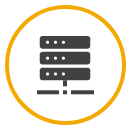
DHIS2 system
Lowest Unit For TB Notification Digitisation

Tuberculosis screening and treatment health center (CSDT)
Stage Of Notification

Reporting at Health zone level
Level Of Access And Use Of TB Notification Data
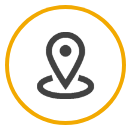
Health Zone level
Private Sector Notification

At the community level, the NTP collects data on suspected TB patients referred using existing community tools
Frequency of digitization of TB notification

Monthly -quarterly reporting
Mode Of Follow-Up With Notified Cases
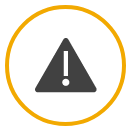
Manual Follow-Up- Phone Call, Physical Visit
Scale Of Implementation
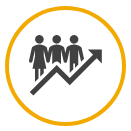
National roll out
Contact Tracing For TB Notified Cases
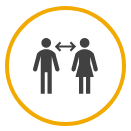
Not yet developed
Multi-Channel Enablement

None
Govt. order for mandatory TB notification

None
PRIVATE SECTOR NOTIFICATION

Facilities in DHIS2 are categorized as public, FBO, or private. Of all facilities registered in DHIS2 30 percent (5,373) of all registered facilities across DRC are in the private sector (FBO and private). Over half (53 percent or 2,848) of these are private health centers, 26 percent (1,414) are private health posts, and 14 percent (771) are private hospitals. [8] Private facilities report aggregated figures only.
COUNTRY IT CAPACITY
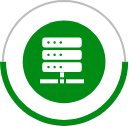
Country Server
Data is hosted in Norway / OSLOW University
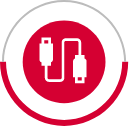
Interoperability
Data export functionality is available and Used
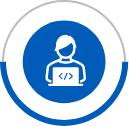
Country IT team
Country has a in-house IT team supported by external IT team.
CURRENT RESOURCES AVAILABLE
USAID invested $13 million annually (2015-2019) through its Challenge TB program and the Integrated Health Project Plus activity (IHP+) over a period of 5 years. Under Challenge TB program, activities focused on TB efforts (coordination, outreach, detection, treatment, tracking) at all levels of the health system were implemented. While IHP+ operates primarily at the provincial and health zone level and focuses on multi-disease, integrated primary health care. [10]
The proposed FY 2020 USAID TB budget for the Democratic Republic of Congo is $14 million [3]
Fund pledged by Global Fund for 2020-2022 is USD 6million as the sixth replenishment [11]

MILESTONES ACHIEVED AND ROAD MAP
2014
DHIS2 Piloted Sub-Nationally
2012
Data entry in eTB manager scaled to 30 sites
2015
PNLT introduced quanTB electronic tool for forecasts drug needs and can provide early warning alerts for stockouts
2016
Configuration of the TB canvas in DHIS2
2017
The Health districts encoded data in DHI2 for 17859 health centers. The Health districts encoded data in DHI2 for 17859 health centers.
2021
The connection of the TB canvas is made to 2071 CDT operational in 2021, The PNLT aims to bridge the TB canvas from the national DHIS2 to the DHIS2 of the WTO (CARN TB).
2022
Introducing DHIS2 Mobile app and adding new modules on contact tracing.

OTHER COMPLEMENTING DIGITAL TOOLS
| Purpose | Tools | Channel | Developed By | Supported By | Scale |
|---|---|---|---|---|---|
| Digital Adherence | NIL | ||||
| Logistic Management | Quant TB | Web Application | MOH | USAID | National Roll Out |
| Laboratory Information Management | NIL | ||||
| Community Led Monitoring (CLM) | One Impact | Mobile App | Dure Technologies | Stop TB Partnership | Pilot |
| Contact Tracing | NIL | ||||



KEY CHALLENGES

Limited digital infrastructure results in technological limitations i.e., using shared laptops/ desktops across the multiple programs causes delays in data entry.

Parallel Data entry: Maintaining Parallel data entry manual records and digital records, increases the task of facility staff and delays data entry.

Data quality : Currently, only the data manager of each health zone enters the data in DHIS2 for all the programs. Due to lack of tuberculosis background at times of data manager is unable to encode the accurate data.

Data Duplication: Duplication of data is another challenge faced by the PNLT. It is reported that due to the unavailability of unique identifiers, data duplication is a challenge at CSDT level.

Data Adequacy : Most health centers transmit data on a monthly or quarterly basis but the data on Tuberculosis are transmitted quarterly according to the directives of the PNLT. All the CDTs do not transmit the report on time. This causes a delay in data entry at the Health Zone level; therefore, the data is not available in real time.

Poor internet connectivity hinders timely data entry, further delaying the availability of real-time data.

PNLT VISION
- ❖ PNLT wants to eventually phase out the paper based records and wants to move to real-time case-based data entry. A comprehensive record keeping National HMIS which is interoperable with other programs.
- ❖ Improving data capturing by introducing DHIS 2 Mobile app for ease of data collection and reporting.
- ❖ Improving the cascade of care by adding new modules (contact tracing) and scale e-reporting of TB cases throughout the country using DHIS2.
- ❖ Improving hardware support (with CSR engagements by computer companies) i.e., using multifunctional mobile tablets will be useful for taking forward field reporting.
- ❖ Building internal capacity of human resources for ensuring sustainability of software, system management and troubleshooting.
RESOURCES NEED
Based on multi-stakeholder discussions, country feedbacks and recommendations for full-filling country’s vision, we have put together an estimated investment requirements and areas needing support for provisioning of a comprehensive case based digital TB surveillance system
Hardware and Infrastructure :

Mobile Devices (for data collection): DRC Congo has 17859 TB Treatment units and to provision mobile device for every facility for case-based TB surveillance, USD 26,78,850 will be needed assuming USD 150 per mobile devices.

Tablet (for data use): DRC Congo has 519 health zones and 26 provisions and to promote active data use, each district and region should be given a tablet which would cost roughly around USD 109,800 assuming USD 200 per Tablet devices.

Internet: In case WiFi is not available in each facility, then mobile internet cost of around USD 5,357,700 should be considered (assuming USD 100 mobile data cost for the entire 3 years per facility, district and regional user).

Server: Based on the current volumes of new cases, DRC Congo would need an investment of USD 20,000-30,000 for next 3 years for server and server maintenance.
Note: Existing devices available through other health programs can be leveraged. In that case, the above-mentioned costing can be accordingly considered.
Software Development :

o Based on various multi-stakeholder meetings and given the fact DRC Congo already have a strong foundation for DHIS2 System aggregated system for TB, around USD 250,000 - 400,000 should be budgeted for a comprehensive TB surveillance system and analytical dashboard for data use.
Capacity Building and Implementation :

After the software development, a dedicated pool of technical resources will be needed to support platform administration, data management and support. A team of 4-6 skilled resources attributing to a cost of around USD 48,000-72,000 per annum should be budgeted (or USD 144,000-216,000 for 3 years assuming USD 1,000 per month per resources). Additionally, reskilling of the current IT team should be budgeted.

Training: This would involve training material development and onsite and remote training of the trainers. Training sessions should be planned for each of the 516 health zones, which could cost roughly USD 100 per district, amounting to USD 51,600 which will be further supported with e-Learning packages. Also, a dedicated trainer should be budgeted in case there is none.
TOTAL investment of around USD 8.5 - 9 million for 3 years will be needed on developing a comprehensive case-based digital TB surveillance system for DRC Congo.
Disclaimer: The above budget is a function of number of facilities, districts and regions and expected volume of data. This only provides a ballpark figure of what is needed in terms of budget.

Recommendations
Following are some of the key recommendations suggested based on the findings of this assessment of country’s digital ecosystem and infrastructure:

Strategic Costing Plan
As a first step it is important for the country to create a comprehensive costed action plan for development, implementation and scale up of the TB case based surveillance system.
Based on PNLT’s vision and the recommendations for improvements, the plan should clearly define targets with actionable interventions and funding requirements supported with a detailed work plan along with timelines. The plan will help the country to assess and monitor the progress to ensure that any risks can be duly mitigated.
Tentative timeline: Month 0-1

Device Procurement
One of the limitations highlighted by NTP is the need to improve the data collection processes at the facility level. To streamline this, procurement, distribution and maintenance of the required data entry equipment like laptops, mobile/tablet devices should be done on an urgent basis. Improving the current infrastructure at the facilities is crucial for a complete transition to digital notification.
Tentative timeline: Month 0-3

Data Integration
The NSP (2021-2023) clearly highlights the importance of strengthening the TB Notification information system for improving all the TB service provisions. [3]
DRC Congo has nationally rolled out DHIS 2 for TB notification. Both DS-TB and DR-TB are reported from the treatment health facilities to the Health zones in hard copies and from here post verification case-based data is entered in DHIS2 system. However, for DR-TB data is maintained in excel files at the TB centers/ hospitals. TB treatment health centers enter data in DHIS2 on monthly or quarterly basis. The data is reviewed nationally through quarterly reports.
To ensure that there is a seamless integration of data from multiple data systems like National HMIS, and other data sources like excel files maintained at facilities without any data loss, the data upload / export API should be explored.
There may also be some other distributed data collection systems and processes which are existing, and it might be difficult to replace them, in such a scenario data can be extracted, transformed and loaded into the central database.
While transformation and data export options offered by the current systems can be used for this other source ETL tools over Postgres DB and / or WHO powered XMart [12] which can be installed within the current environment can also be considered.
Tentative timeline: Month 6-12

Mobile app
Implementation of data collection via mobile app to ensure ease of use and real time reporting.
PNLT is seeking help in building a TB MIS app which is embedded with the national TB MIS system and has an enhanced UI and dashboard features that will improve data entry at facility level. This would help in tackling challenges like inconsistent data connectivity/network issues which delays reporting of cases, and an inconsistent availability of hardware for data entry. One effective way to overcome this is to support the current data collection processes by introducing a mobile application for the health facilities.
Other advantages for a mobile application include better performance , effective use of device features like in house system updates , usage of location , security measures and tracking user patterns and issue log mechanisms and other analytics measures.
Several mobile solutions for real time case-based notification can be explored for local adaption and building the mobile counterpart for eTB manager. Open source technologies like DHIS2 Mobile App, ODK and KOBO are some notable examples. [13]
Tentative timeline: Month 0-12

E-Learning
Packages to train health professionals on eTB manager use and workflows.
Any national scale roll-out will have its own capacity and training challenges which requires development of a comprehensive eLearning module allowing all health staffs involved in data collection process for training not only on the National HMIS, DHIS2 application but also on the latest manual of procedure and continued medical education on TB care.
To address the challenges with periodic training of facility level staff to orient them on using DHIS2 System for direct data reporting, the MOH must engage in development of a comprehensive eLearning module for app training.
Training tools like Moodle [14] built on standard LMS framework can be reviewed for application rollouts.
Additionally, for training and updates on the latest manual of procedure and continued medical education on TB care, modules can be developed for TB Health providers, administrators at facility and district level to develop and enhance M&E competencies for ensuring a consistent program oversight, especially for the case-based tracker roll out within the existing applications.
Guide TB platform developed by WHO Philippines is a good example of eLearning module for health staffs involved in TB care.
Tentative timeline: Month 0-3

Capacity building for application maintenance
Planning for capacity building includes workforce assessment, ranging from ICT professionals to health workers providing care services. Since the application requires regular updates and adaptations, the system support team requires trained personnel on the technology stack in use.
Strengthening the PNLT team with trained system administrators will help in reducing costs (in seeking technical support) and improving and expediting the planned implementations.
Tentative timeline: Month 6-24

Contact tracing application implementation
To strengthen the TB surveillance efforts of the country and for reaching out to all TB positive individuals, an active focus on contact tracing becomes crucial. The standard guidelines for household screening can be incorporated as a module in the national TB notification tool and be implemented to fast track the country’s efforts to eliminate TB and target the initiation of preventive treatment for all TB contacts.
Tentative timeline: Month 6-12

Patient Interactive Systems
Establishing a direct and secured mechanism for engaging with patient has potential for drastic improvements in tracking lost to follow-up patients.
Auto generation of notification and messaging by the system through communication channels like Social Media channel, IVRS and SMS outbound messages should be explored. Open source applications like Open MRS can be used for these activities. [15]
Tentative timeline: Month 6-24

Data Use
The PNLTs plan clearly emphasizes on the importance and need for improve data use. This can be made possible by making case-based TB data across systems more real time and useful.
Building on the current DHIS2 System and DHIS2 visualization modules that offer a comprehensive dashboard for reviewing of program and data indicators, additional features of pivot table, event reports which support dimensions, data aggregation reports and individual line lists are extremely useful.
To strengthen and expand the data visualisation scope and making effective use of data for predictive modelling, data science and for advanced analytics it is recommended to use best of the breed tools like Tableau , Power BI which offer these features. APIs can be generated and connected with these applications, and these can be used as an extended analytical component of the data analysis framework. [16]
Tentative timeline: Month 6-12

Unique Identifiers
Duplication of data due to multiple systems are used for data entering. This results in missing out some of crucial information as a result patients are often not followed-up or tracked.
It is recommended while capturing the information of the TB cases they should be linked with unique identifiers like national Id, to ensure de-duplication of the patient is avoided and case is tracked, monitored and followed up throughout its treatment journey.
Tentative timeline: Month 0-1

Strategic Technical Recommendations
Application Upgrades including Server Augmentation & Infrastructure Upgrades : To make sure that systems implementation and scale up of application is supported well, the key need is to have a long-term strategic plan that would cover the technical and operational objectives.
The strategy recommended would cover the following core areas
✓ Technical Upgrades: Based on the architecture, the upgrade would be done with the database, a middleware system, the operating system or the hardware.
Additionally, the architecture should support the integration layer which would be needed for data exchange with other national / external systems. The technologies that need to be brought in and the areas of inter-connection need special focus.
Additionally, the advance admin features offered by the version 2.34 of DHIS2 System help the administrators to support the operational needs better for onboarding users, real time change in data variables and user management etc effectively.
Apart from this version 2.34 also supports compliance to GDPR standards and offers more controlled data encryption practises. [17]
✓ Performance Optimisation & Testing : To support the national scale up and implementation strategies it is very essential to have system(s) and application testing done to enable a reliable platform and which also helps in architecture updates and augmentation.
Automated System and Application Testing tools like Selenium and Appium can be used. Load Testing tools which helping in database sizing and planning need to be adapted for effective planning . [18.1] , [18.2]
✓ Application & System Security Audit
To strengthen the current systems framework and ensuring long term sustenance it is important to have regular evaluation of the security of the information and systems by measuring how well it conforms to an established set of criteria.
These would also include developing a framework which should outline policies in line with recommended standard policies like HIPAA [19.1] , [19.2] to cover
• Patient Data Management
• Server & Infra guidelines
Apart from application measures offered by DHIS2 for patient data security , hosting solutions offered from Azure also cover these as part of their deployment options which can be considered as part of systems hosting. [20]
ACKNOWLEDGMENT
We thank the Line Director National TB Program, Dr. Michel Kaswa Kayomo and the entire team for participating and engaging in the assessment. We would also like to extend our gratitude to Dr. Gertude Lay for providing valuable insights into DRC’s vision for creating an advanced case-based TB surveillance and notification system.
CONTACT DETAILS
Department of National
TB
Program
Ministry of Health
Kinshasa, DRC
Email : sante@gouv.cd
REFERENCES
- Health systems in the Republic of Congo: challenges and opportunities for implementing tuberculosis and HIV collaborative service, research, and training activities: https://www.ijidonline.com/article/S1201-9712(16)31196-1/pdf.
- Global Tuberculosis 2021; World Health Organization: https://www.who.int/teams/global-tuberculosis-programme/tb-reports.
- Democratic Republic of Congo Tuberculosis Roadmap overview, Fiscal Year 2021: https://www.usaid.gov/sites/default/files/documents/DRC_Narrative_TBRM21_TB_DIAH_Version_FINAL.pdf".
- Outbreak of Tuberculosis and Multidrug-Resistant Tuberculosis, Mbuji-Mayi Central Prison, Democratic Republic of the Congo: https://www.measureevaluation.org/resources/publications/fs-19-344.html.
- Mapping the Stages of MEASURE Evaluation's Data Use Continuum to DHIS 2: An Example from the Democratic Republic of the Congo: http://www.btrc.gov.bd/content/mobile-phone-subscribers-bangladesh-january-2021.
- Digital Health for the END TB strategy an agenda for action: https://www.who.int/tb/areas-of-work/digital-health/Digital_health_EndTBstrategy.pdf?ua=1
- The Role of the Private Sector in Improving the Performance of the Health System in the Democratic Republic of Congo: https://documents1.worldbank.org/curated/en/487571539958646859/pdf/131045-REVISED-23-1-2019-10-49-58-WBDRCPSAEnglishWEB.pdf
- Data reportal, digital 2021: DR Congo: https://datareportal.com/reports/digital-2021-DRC?rq=DRC.
- Mobile Vendor Market Share The Democratic Republic of Congo: https://gs.statcounter.com/vendor-market-share/mobile/congo-democratic-republic-of-the.
- Monitoring, Evaluation and Coordination; Assessment of USAID/ DRC Tuberculosis portfolio: https://pdf.usaid.gov/pdf_docs/PA00WJ2Q.pdf
- The global fund: https://www.theglobalfund.org/en/government/profiles/congo-democratic-republic/
- WHO Xmart : https://portal-uat.who.int/xmart4/docs/general/Overview.html
- DHIS2 Mobile App : https://dhis2.org/android/
- Application Training Tool : https://moodle.org/
- OPEN MRS : https://openmrs.org/
- DHIS2 Power BI : https://community.dhis2.org/t/dhis2-to-powerbi-connector-is-ready-check-out-the-video-test-it-use-it-and-give-us-feedback/3704
- DHIS Security : https://dhis2.org/security/
- Performance Tools ( Selenium , Appium ) : https://appium.io/ , https://www.selenium.dev/
- HIPAA Compliance Framework : https://www.hhs.gov/hipaa/for-professionals/security/laws-regulations/index.html , https://www.hipaajournal.com/considered-phi-hipaa/
- Azure Hosting Services : https://docs.microsoft.com/en-us/azure/compliance/offerings/offering-hipaa-us



